|
|
 |

“Wine from… Switzerland?” This is a question I’ve been asked countless times, both before and after my four tasting trips to Switzerland during the past 20 years. I’m very familiar with the usual follow-up questions as well, so let’s 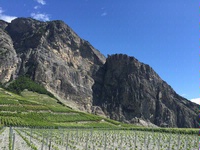 get right to the main points: Swiss wines are superb, and that’s true of reds as well as whites. They are painfully hard to buy in the USA--and in other export markets for that matter--simply because the Swiss drink almost everything themselves. Tasting them essentially requires traveling to the country, which may seem like a deal-breaking requirement…until one learns that Swiss wines are actually remarkably affordable within Switzerland. Admittedly, few other things seem inexpensive when one’s traveling there, but they don’t charge extra for looking at the gorgeous mountainous scenery, and the vineyards are among the world’s most impressive and beautiful.
My most recent trip was early last month, concentrated entirely in the French-speaking portion of Switzerland’s southwest. Excellent wines are also made in 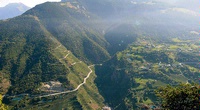 the Italian-speaking Ticino region, and vineyards are also sprinkled to the north. However, those seeking an immersion experience without a lot of driving involved are best directed toward the northern shore of Lake Geneva and the stretch running eastward from the Lake along the Rhône called the Valais. These areas are only an hour apart, and from the beautiful city of Lausanne atop the north shore of the Lake, another hour will take you to the vineyards by Lakes Neuchâtel, Morat and Bienne.
Rather than offering a lot of technical background on growing conditions, I want to take you straight to a rundown of the best wines in an effort to prod you onto an airplane. Please be sure to scroll down far enough to see my reviews of red wines, as these are not to be missed. Climate change has definitely improved Switzerland’s reds, the bests of which are now very near the peak of the wine world’s quality pyramid. I’ve broken things down by grape variety, listing the top scoring wines first and shifting to alphabetical order when scores are tied:
WHITES:
CHASSELAS:
Jean-René Germanier, Fendant de Vétroz (Valais) Chasselas “Les Terrasses” 2017 ($14): An excellent rendition of a wine type that can be dismissed (foolishly) as just a simple summer sipper, this is actually quite complex but still very refreshing. Fruit scents and flavors of golden apple are predominant, but the wine also shows quite intense minerality that really takes over in the wine’s finish. The acidity is quite well integrated and so too is the very notable carbon dioxide fizziness, which is initially almost up to what the Italians would call “Frizzante,” but subsides somewhat in the glass and likewise in the bottle after the (well chosen) screw cap has been cracked. Indisputably delicious. 92
Maison Gilliard, (Valais) Fendant “Les Murettes” 2017 ($15): Gilliard is one of Switzerland’s most eminent houses, and this particular wine among its leading products, with a great sense of tradition conveyed by the hefty proprietary bottle, fantastic throw-back label, and cork closure…even if the 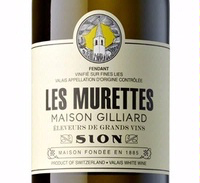 latter is (wisely) a modern composite rather than a solid cork. Of course, none of that matters if the wine isn’t good, but the fact is that the wine is terrific…at least in this vintage. It shows notably more heft and less fizz than Germanier’s “Les Terrasses” bottling from this region and vintage, but that’s not a knock on either of them…just an indication that they should be employed differently. Germanier’s is a Fendant that is best suited to pre-dinner sipping or pairing with the lightest possible fare, whereas Gilliard’s can stand up to fish dishes or even scallops, as I discovered by first-hand experience. Yet the wine is still fresh…apple and pear notes are energized by citrus acidity and enough carbon dioxide to coat the interior with bubbles, so there’s no reason to treat this all that much differently than you would other Fendents…just with a little more seriousness and respect. 92
Cave de Rois / Marco & François Grognuz (St. Saphorin, Vaud) Chasselas “Le Chevalier” Grand Cru 2017 ($17): This is a terrific rendition of Chasselas, with a little spice note derived from 25% of the wine aged in new, medium-toast oak. The spice note is the only signature left by the oak…nothing overtly woody about this, and the freshness of the wine is not compromised at all. It is worth noting that the “Grand Cru” designation is granted based on limited yields rather than designated vineyard sites. With a rather generous yield of 75 hectoliters per hectare )for this particular wine), one must say that “Grand Cru” in the Swiss context is rather underwhelming by comparison to, say, Burgundy. But still, there’s nothing underwhelming about the performance of this bottling or its price, which is extremely reasonable in view of land prices, the expensive wood involved, and the sheer deliciousness of the wine. 92
Domaine Ruchonnet (Lavaux, Vaud) “Courtisan” 2017 ($17): Sourced from super steep vineyards in St.-Saphorin, perched above Lake Geneva, this is strikingly delicious, and for more than one reason. It shows an uncanny lightness and richness at once, with bright citrus notes running in tandem with ripe apricot notes. There’s no unresolved carbon dioxide here to accentuate the freshness of the wine…all of its brightness and energy is derived from perfectly ripened fruit. But fruit is hardly the sole story line here -- there’s also an intense mineral streak that asserts itself in the mid-palate and runs right through the long, symmetrical finish. Summer in a glass… yum! 91
Clos Grandinaz (Sion, Valais) Chasselas 2017 ($17): This isn’t everyone’s idea of what Swiss Chasselas should be, as it is a much richer, riper rendition than one might expect after all of the wonderfully fresh, fluffy, screw-capped examples to be relished in French-speaking Switzerland. It is certainly a more serious take on the variety, with fruit recalling very ripe pears -- almost poached ones -- and yet the wine is certainly not sweet, nor confining due to its ripeness. However, one would still be well advised to pair this with food such as freshwater fish or chicken or cheeses, as it is really too ripe and weighty for shellfish, and is a little short on acidity for great performance as an aperitif. But get this with the right food, and stand back. 90
Cave Beau Reveil (Lavaux, Vaud) Chasselas “Dent de Lion” 2016 ($15): This vintage of this wine is still recommended with relish, though it can’t quite compete with 2017 bottlings from this area, and freshness is what these wines are all about. Its only shortcoming is a slightly less expressive bouquet than the best examples, but everything else is excellent. Flavors of pear and golden apple are delicious, with a slightly salty minerality also lending interest. A bit less fizzy than many Swill renditions of Chasselas, but still showing a little prickle on the palate, this is a wine to grab…especially for the $11 that I paid for it. 89
MARSANNE:
Rouvinez (Valais) Marsanne Grand Cru “Selection Didier de Courten” 2015 ($30): This was made in collaboration with a local chef, and bears his name. I don’t know what his role might have been, but I liked this much more than the regular release of Marsanne from 2016, as this showed no bitterness, excellent fruit recalling ripe peaches, and entirely positive oak influence that offered complexity without distraction. You might wonder what Marsanne is doing in Switzerland, at least until you look at a map and realize that this fruit was grown on steep slopes above the Rhône River--albeit on the eastern rather than the western side of Lake Geneva. 92
PETITE ARVINE:
Rouvinez (Valais) Domaine Les Seilles Petite Arvine de Fully 2016 ($24): Both bottlings of Petite Arvine that I tasted from different estates owned by Rouvinez were so good that I was tempted to plant this variety in my back yard--regardless of how different my growing conditions are from Switzerland’s. This was finished with about 3 grams per liter of residual sugar, but that’s below the tasting threshold of almost everyone, and even if you could taste it, you might well be glad it’s there to counterbalance the electric acidity. The fruit recalls stone fruits with a touch of mandarin orange, but the finish is very focused, energetic, and ultimately clean as a whistle. 92
Rouvinez (Valais) Domaine Château Lichten Petite Arvine 2016 ($24): Petit Arvine can be wonderfully fresh and exciting, as in this rendition, and even when there’s some residual sugar in the wine, the acidity can still be extremely energetic. The fruit profile here recalls barely-ripe tangerines, with a little juiciness that then gets cleaned up in the finish by a wave of zesty citrus acidity. 91
MISCELLANEOUS WHITES:
Cave de Rois / Marco & François Grognuz (Valais) Domaine des Evouettes Sauvignon Blanc 2017 ($18): This is the only Sauvignon Blanc 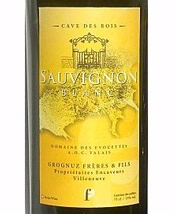 that I tasted--or even saw--on a recent tasting trip, which means that the country has a spotless record with the variety. Aged for 7 months entirely in first- and second-fill barrels, it is extremely well made in a style that routinely runs off the rails. It shows some richness on the palate as well as a bit of oak spice, but also some pleasant grassy aromas and very good acidity that seems attributable to malolactic fermentation having been avoided. Impressive winemaking skill could hardly be more evident in the finished wine. 92
Rouvinez (Valais) Marsanne Grand Cru “Selection Didier de Courten” 2015 ($30): This was made in collaboration with a local chef, and bears his name. I don’t know what his role might have been, but I liked this much more than the regular release of Marsanne from 2016, as this showed no bitterness, excellent fruit recalling ripe peaches, and entirely positive oak influence that offered complexity without distraction. You might wonder what Marsanne is doing in Switzerland, at least until you look at a map and realize that this fruit was grown on steep slopes above the Rhône River--albeit on the eastern rather than the western side of Lake Geneva. 92
Cave de Rois / Marco & François Grognuz (Valais) Domaine des Evouettes Viognier 2017 ($19): I am not a big fan of Viognier, and wouldn’t 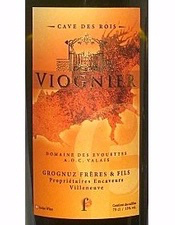 cross the street to try one aged in wood, so you can imagine my surprise when tasting this delicious wine. It displays full but still restrained floral aromatics, which somehow survived 25% vinification in new wood (with the rest brought up in 2nd or 3rd year cooperage). The acidity is perfectly adequate, and though the wood component raises the need for freshness, there’s just enough acid to achieve irreproachable balance. Only about 800 bottles of this were made in 2017 due to crop reduction by hail, so consider booking a flight if you want a taste. 90
ROSÉ:
Château d’Auvernier (Neuchatâtel) Pinot Noir Rosé “Oeil de Perdrix” 2016 ($19): I wouldn’t have even considered buying a rosé wine from 2016 rather than 2017 if shopping in the USA, but this was the vintage on offer 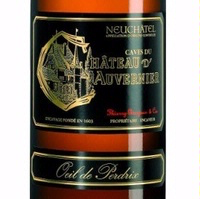 when I was in a wine shop south of Freibourg, and having loved it in the past, I snapped it up without a second thought. Maybe not even a first thought…just animal recollection…and my recollection was confirmed, as the wine is totally convincing. There’s almost medium body here, with the depth and breadth you’d expect from that, as well as a little bit of grip in the finish (presumably from a bit of macerated tannin…but this could be a trick played on the mind by the wine’s unusual substance on the palate). Despite it pushing its luck on age, it remains utterly fresh, with excellent--but subtle--acidity that keeps this surprisingly light on its feet even as it surprised on account of its depth and length. By way of context, I’ve tasted more than 250 rosés since the 1st of March, and some were more crackly and zesty, but none were any better with all factors considered. 92
REDS:
PINOT NOIR:
Château d’Auvernier (Neuchâtel) Pinot Noir 2016 ($25): There’s a caveat coming regarding this wine, so please resist any temptation to buy it off my point score, but with that said, it totally deserves the score on account of 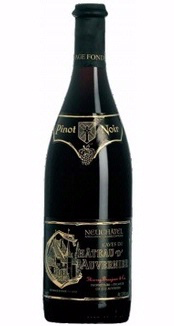 remarkable aromatic complexity and marvelous flavors. The issue is that the wine is very notably afflicted by brettanomyces, a rogue yeast that imparts earthy, animal, sweaty saddle aromas and flavors that polarize tasters and often compromise a wine’s ability to age predictably and symmetrically. Caveat emptor as a result, but man…this is one wild and exciting ride, with fresh fruit (red and black cherries) definitely holding its own against the earthy scents and flavors. The balance of oak and acidity is basically perfect, so brett is the only issue here. Buy it, drink it soon, and rejoice in its flashiness before any possible regret sets in. 93
Cave de Rois / Marco & François Grognuz (Valais) Domaine des Evouettes Pinot Noir “Sang Bleu” 2016 ($22): The Grognuz family has been making this wine since the very early 1980s, and the 2011 rendition won a competition in Sion for the best Pinot in Switzerland. I have no idea how many entries were involved in that competition, but I can say with certainty that this would win a lot of competitions at which I’ve judged. Fully 30% of the oak was new, and the cap was punched down rather than broken by the pump-over method, as with virtually all of the world’s top Pinots. Although some oak shows in the finished wine, the fruit is easily up to the challenge it poses, maintaining its delicacy but showing good length and fruitiness. Terrific winemaking here. 93
Propriété de L’Ètat de Fribourg (Vully) Pinot Noir Vignoble de L’Ètat 2016 ($22): Vully was not an appellation even mentioned when I first traveled to Switzerland for wine, but now… perhaps largely due to climate change and 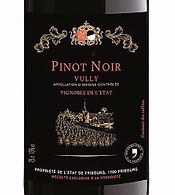 the success of Pinot here… it belongs on everyone’s map. The fruit is delicate but penetrating in flavor, which is the key characteristic of all great Pinot. I’m not ready to claim “greatness” for this wine, but the fact that it can get that one key thing right suggests that greatness can truly be achieved with sufficient vine age and winemaking talent. What is in the bottle now is already wonderfully impressive, with little evidence of assistance from fancy oak -- or oak at all for that matter -- yet the stable color and depth of color suggests that some must have been involved. The acidity and tannin are matched to the fruit in a way that is, well, perfect, and the symmetries and proportionality of this wine is really quite impressive. I’m honestly not sure whether this is a co-op or some other sort of enterprise in light of its state-affiliated name, but who cares. The wine is completely delicious. 92
Jean-René Germanier (Vetroz Grand Cru, Valais) Pinot Noir “Balavaud” 2016 ($25): If I’m off on the score of this wine, I’m off on the low side. It is actually a light-bodied wine…which is entirely appropriate for Pinot, yet it is very expressive in aroma and flavor. Scents and flavors of red cherries and plums are vivid without being too overt or grapey, and the light body is not overwhelmed with wood, which is almost imperceptible. The tannins are very fine, and the fact is that all of the flavor and structural elements are all perfectly proportioned, and the wine just sings in perfect harmony. This will seem light to those steeped in California Pinot, but it will seem like a genuine threat to winemakers in Burgundy. No kidding…this is completely convincing stuff. 92
Rouvinez (Valais) Pinot Noir “Colline de Géronde” 2016 ($22): This was aged in large barrels, with wonderful balance between the expressive, sweetly fruity flavors and the acidity and tannin needed to provide freshness and grip. Delicate but satisfying, this is completely convincing Pinot that leaves only two questions un-answered: Why didn’t these people get the message that very fine Pinot Noir is supposed to cost $60? And, if they can make this and sell it for $22 in Switzerland--of all places--why the hell can’t others make Pinot this detailed and proportional for a comparably attractive price? 92
Domaine de la Tour (Valais) Pinot Noir 2011 ($20): This is quite a surprising and impressive Pinot in light of its depth of flavor and freshness of fruit at this stage, nearly seven years after the vintage. The color is also impressively deep, and yet there’s very little evident oak (and wood aging has the effect of “fixing” or solidifying the pigments in Pinot Noir, which can precipitate out from examples vinified without wood). Also surprising is the fact that the wine remains so fruity at this stage, and yet fruit is not the only attraction, as there are interesting savory notes lending complexity…and those seem to have originated from time in bottle. The flavors are really more akin to berries than cherries, which makes a bit of sense as this was a warm vintage in south-central Europe, but still…we’re talking Switzerland here, and a part of it along the section of the Rhône from which the Alps are in clear view. But in the last analysis, my befuddlement is of no import by comparison to the simple question of whether the wine is delicious, food-friendly, and worth the asking price--and the clear answer must be affirmative to all three questions. 91
Château de Mur (Vully) Pinot Noir 2016 ($17): This lithe Pinot Noir gets points for delicacy… and should arguably get even more of them than I’ve given, but will prove a bit too faint for some tasters and many foods for me to go any higher. With that stated, it is a very pretty wine, with red cherry fruit and a little whiff of wild strawberry and almost no overt oak. By way of context, this is actually meatier than almost any Bourgogne rouge (even from a ripe year like 2015), but is still a lot lighter than Pinot from Oregon or New Zealand, much less California. All in all, a recommended wine, even if some of the verbiage here might seem like damning with faint praise. 89
CORNALIN:
Familie Pierre-Alain Mathier (Valais) Cornalin “Julius” 2016 ($24): This is an object lesson in Swiss precision. Medium-bodied, but quite penetrating in both aroma and flavor, with impactful dark berry fruit notes edged with subtle savory notes and a bit of nuance in the finish, this is supremely versatile wine. It can be sipped without any sense of astringency (by me, at least), as the tannins are super-fine and easily carried by the fruit’s prominence, yet it could also work well with any moderately robust food based on poultry, white meats such as pork or veal, or even red meat dishes without notable charring involved. Remarkably well integrated for such a young wine, it will likely get better, and perhaps a lot better, but damn…it is delicious right now. 92
Rouvinez (Valais) Domaine Clos Montibeux Cornalin 2016 ($25): Yet another wonderful Cornalin, this raises the question of why there isn’t more of this planted in similar sites with comparable elevation and climate. Be that as it may, this shows wonderful fruit recalling red raspberries and black currants, with loads of primary fruit but also some savory undertones and gutsy, grippy tannins that keep the fruit from seeming too obvious. Bloody terrific. 92
Maison Gilliard (Valais) Cornalin “Les Perlines” 2016 ($28): Some of my colleagues on WRO who know that I’m not much of a fan of Beaujolais will wonder why I love this wine (and many renditions of Cornalin, more broadly), 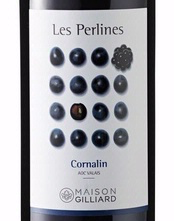 as the body is light-ish and the fruit quite exuberant. But if they taste it, you’ll hear the concurring opinions come rolling in. The berry fruit is just gorgeous, and I worry that the blueberries that are emblazoned on the label may have seeded my sensory experience… but that does indeed seem to be the predominant fruit flavor. There’s also a red fruit note, and maybe a black one too, but the fruit is so pure and palpable that I can’t claim in all honesty to be able to sort all of them out. There is enough tannic grip to give this a good shot at the table with poultry and light meats, but the tannin is so ripe and fine in grain that this won’t put anybody off if just poured straight-up at a summer party. An absolutely winning, utterly delicious wine. You probably heard it here first, but rather than taking any credit, here’s a tip of the cap to all vintners who are still growing this instead of pulling it out to plant Pinot, which can surely command higher prices and also be exported much more easily. 91
Frederic Dumoulin (Uvrier, Valais) Cornalin 2016 ($22): My first impression of this fruity wine was that it was like Beaujolais with--sonically speaking--the bass turned up. And that coinage rang true to my dinner partners, and held up over time as well, including time at the table. The fruit is reminiscent of red berries but with a black raspberry note too, and though there’s little overt evidence of any wood, there’s just enough grip to suggest that some may have been involved (though grape tannins and wood tannins can be tough to distinguish in fruity, young wines such as this). Like so many of Switzerland’s wonderful wines, this is really light enough to just sip with pleasure, but shows sneaky power when asked to rise to the challenge at the table. This isn’t going to win any prizes for complexity, but it is bloody delicious and very, very broadly useful. 90
MISCELLANEOUS REDS AND BLENDS:
Cave de Rois / Marco & François Grognuz (Lavaux, Vaud) Syrah 2015 ($33): This was one of the two best red wines I tasted on my recent trip to Switzerland, and that’s saying something, because I tasted a bunch of very good ones. Aged entirely in new oak, it shows beautiful, deep color and is impressively concentrated, and yet the wine impresses much more with finesse than power. It primary attraction is gorgeous flora aromas recalling freshly picked violets, but the fruit component is complex and convincing also, with distinct notes of red, black and even blue fruit tones. The first vintage of this was 1986, and back then, the family needed an exception from the appellation authorities even to plant Syrah. Brilliant, stylish stuff. 94
Rouvinez (Valais) “Coeur du Domaine Rouge” 2015 ($48): Aged in big barrels and showing terrific intricacy and balance, this proves that Swiss precision extends beyond watches to blended wines, despite the fact that so many of the country’s bottlings are single-variety in composition. Comprised of 70% Cornalin, 20% Humange Rouge and 10% Syrah, it displays lots of fruit on the nose and palate, but also intriguing savory accents, bracing wood, and fresh acidity. Not cheap by Swiss standards, but a bargain anyplace else. How crazy is that? 94
Frederic Dumoulin (Valais, Switzerland) Cabernet Franc “L’Orpailleur” 2016 ($20): Given the pace of climate change in this part of Europe, it may not be long until Cabernet Sauvignon can be ripened fully in the Valais, but for now, you’ll need Cab Franc to hold you over. And this one will do very nicely indeed, as it shows all the best characteristics of the variety, with a lightly herbal aromatic profile, medium-bodied fruit with mostly blackberry and black cherry notes, and a long finish that is lengthened by very fine-grained tannins and very subtle wood. This will quite probably improve in bottle for another couple of years… maybe more… but good luck keeping your mitts off of it if you try a bottle anytime soon. 91
Frederic Dumoulin (Valais) Merlot “L’Orpailleur” 2016 ($22): This delicious wine won’t accord with everyone’s sense of Merlot, but that is a good thing, in my view, as it will stretch your understanding of what this potentially great variety can show from a new place with distinctive growing conditions. Although the finished wine is undoubtedly fully ripe (there’s not the slightest hint of green-ness), the brightness of the fruit shows the influence of a relatively cool climate. The fruit flavors are very intense, with red berries and fresh plums coming first to mind, and there’s almost no impression of wood or even of savory undertones--this is all about fresh fruit that just bursts out of the glass and across the palate. The flavors have lots of linear energy, and will likely pick up more depth and nuance with time, but it will be hard to resist this with grilled light meats on a warm summer evening. 90
|
 |
|